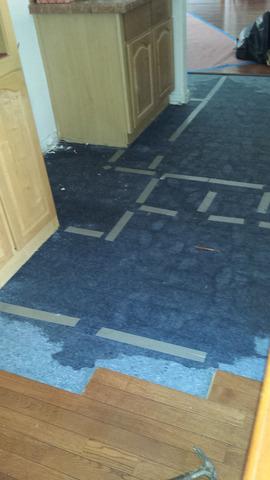Understanding Mold Development: Timeline and Prevention Tips
Mold can be an unwelcome and hazardous guest in any home. Understanding the timeline for mold growth and implementing effective prevention strategies are key to maintaining a healthy living environment. This comprehensive guide delves into the specifics of how mold develops, its potential risks, and provides actionable tips to prevent its occurrence. How Mold Grows and Factors Affecting Its Development Mold is a type of fungus that thrives in moist environments and can start to grow within 24 to 48 hours under optimal conditions. However, visible mold growth might take a few days to become noticeable. The speed at which mold appears depends on several factors: Moisture: Mold cannot grow without moisture. Leaks, high humidity, or condensation can all provide the necessary conditions for mold spores to start multiplying. Temperature: Mold grows best in warm temperatures, typically between 60 and 80 degrees Fahrenheit. Food Source: Mold feeds on organic materials such as wood, paper, carpet, and food residues. Oxygen: Mold needs oxygen to grow but can thrive in areas with minimal airflow, which often makes hidden corners and enclosed spaces common sites for mold proliferation. Timeline for Mold Growth Understanding the timeline of mold growth helps in identifying and mitigating risks promptly. Here’s what you can typically expect after exposure to a moisture source: 24 to 48 Hours: Mold spores begin to germinate. 3 to 12 Days: Mycelium (mold roots) start to colonize. 18 to 21 Days: Mold colonies become visible and potentially begin producing spores. Types of Mold and Their Growth Rates Different types of mold have varying growth rates. Black mold (Stachybotrys chartarum), often highlighted due to its potential to release mycotoxins, can begin to grow within a few days but typically takes longer to colonize compared to other types: Aspergillus: Common in homes, grows on walls, insulation, and paper products. Cladosporium: Prefers cooler areas and can be found on fabrics and wood surfaces. Stachybotrys: Known as black mold, grows on cellulose-rich surfaces like drywall and might take a week or more to become visible. Preventing Mold Growth Preventing mold growth is more manageable than dealing with its aftermath. Here are practical tips to keep your home mold-free: How Mold Affects Your Home and Health Mold not only damages your home’s structure and aesthetic but also poses health risks, especially to individuals with allergies or compromised immune systems. For detailed insights, visit our page on how mold affects home value. Professional Mold Remediation Sometimes, despite all efforts, mold takes hold. This is where professional remediation services come into play. Learn more about our expert mold remediation solutions at Genesis Restore. Conclusion Understanding the dynamics of mold growth and implementing effective prevention measures are essential steps in protecting both your health and your property. For more information on safeguarding your home from mold and our remediation services, visit our main website Genesis Restore. Armed with this knowledge, you can tackle mold issues more effectively and maintain a healthier living environment. Remember, the key to controlling mold is controlling moisture.
Understanding Mold Development: Timeline and Prevention Tips Read More »


